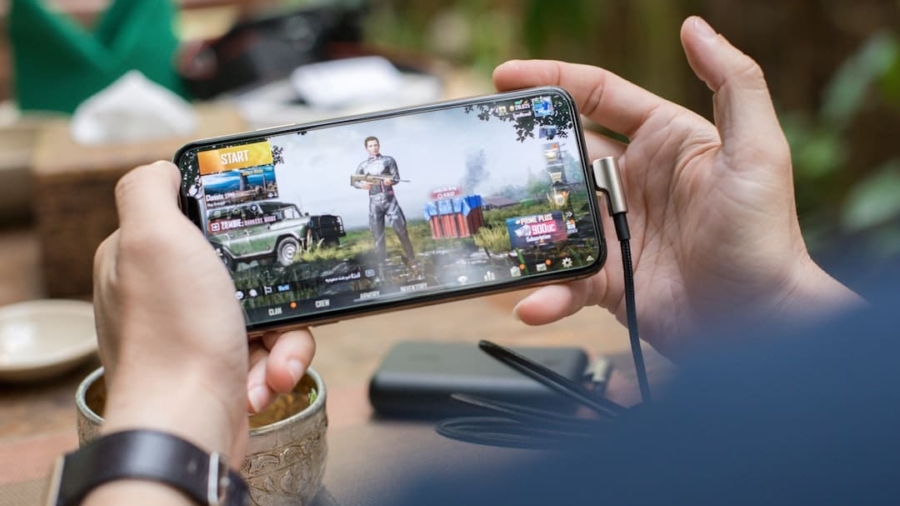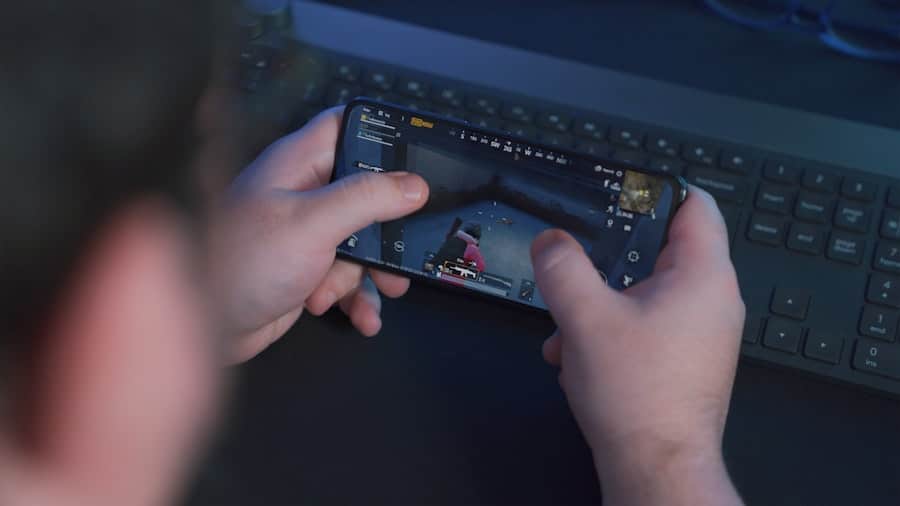The advent of low-latency 5G technology marks a significant leap forward in mobile telecommunications, promising to revolutionize how we connect, communicate, and interact with digital content. Unlike its predecessors, 5G is designed to deliver not only faster data speeds but also reduced latency, which is the time it takes for data to travel from one point to another. This reduction in latency is crucial for applications that require real-time responsiveness, such as online gaming, autonomous vehicles, and augmented reality experiences.
With latency figures dropping to as low as one millisecond in ideal conditions, 5G technology opens up a new realm of possibilities for developers and users alike. The implications of low-latency 5G extend far beyond mere speed enhancements. It enables a more seamless integration of various technologies, allowing for a more interconnected ecosystem where devices can communicate with each other almost instantaneously.
This capability is particularly transformative for mobile gaming, where the demand for real-time interaction and quick response times is paramount. As the gaming industry continues to evolve, the introduction of low-latency 5G is set to redefine the landscape, offering gamers experiences that were previously unimaginable.
Key Takeaways
- Low-Latency 5G technology is revolutionizing the gaming industry by providing faster and more reliable connections for multiplayer mobile gaming.
- Multiplayer mobile gaming experiences significant improvements with Low-Latency 5G, including reduced lag, faster response times, and smoother gameplay.
- Gamers benefit from Low-Latency 5G with enhanced performance, better graphics, and more immersive gaming experiences.
- Increased immersion and realism in multiplayer mobile gaming are achieved through Low-Latency 5G, creating more engaging and interactive gameplay.
- Despite its advantages, Low-Latency 5G in multiplayer mobile gaming faces challenges such as network coverage, infrastructure, and compatibility issues that need to be addressed for widespread adoption.
Impact of Low-Latency 5G on Multiplayer Mobile Gaming
The impact of low-latency 5G on multiplayer mobile gaming is profound and multifaceted. One of the most significant changes is the enhancement of competitive gameplay. In fast-paced multiplayer environments, even a fraction of a second can determine the outcome of a match.
Traditional mobile networks often suffer from latency issues that can lead to lag, causing players to miss critical moments or make errors due to delayed responses. With the implementation of low-latency 5G, these issues are significantly mitigated, allowing players to engage in more fluid and competitive gameplay. Moreover, low-latency 5G facilitates the development of more complex and dynamic game environments.
Game developers can create expansive worlds filled with intricate details and real-time interactions without worrying about the limitations imposed by higher latency networks. This capability allows for richer narratives and more engaging gameplay mechanics that can adapt in real-time based on player actions. As a result, multiplayer games can evolve into more immersive experiences that keep players engaged for longer periods.
Advantages of Low-Latency 5G for Gamers
The advantages of low-latency 5G for gamers are numerous and impactful.
This is particularly important in multiplayer gaming scenarios where numerous players are interacting within the same environment.
The enhanced capacity of 5G networks means that players can enjoy smoother experiences even in densely populated virtual spaces, reducing instances of lag and disconnection. Additionally, low-latency 5G enables features such as real-time voice chat and video streaming within games without noticeable delays. This capability enhances communication among players, fostering teamwork and collaboration in multiplayer settings.
Gamers can strategize and react to in-game events almost instantaneously, which is essential for competitive play. Furthermore, the improved network reliability associated with 5G technology means that players are less likely to experience interruptions or connectivity issues during critical moments in gameplay.
Increased Immersion and Realism in Multiplayer Mobile Gaming
The introduction of low-latency 5G technology significantly enhances immersion and realism in multiplayer mobile gaming. With faster data transmission rates and reduced lag, developers can implement advanced graphics and physics engines that create lifelike environments and interactions. For instance, games can now feature realistic weather systems, dynamic lighting effects, and intricate character animations that respond to player actions in real-time.
This level of detail not only captivates players but also deepens their emotional investment in the game. Moreover, augmented reality (AR) and virtual reality (VR) experiences benefit immensely from low-latency 5G. These technologies rely on instantaneous feedback to create convincing simulations that transport players into alternate realities.
With 5G’s capabilities, AR games can overlay digital elements onto the real world with minimal delay, allowing for interactive experiences that blend seamlessly with the player’s environment.
Challenges and Limitations of Low-Latency 5G in Multiplayer Mobile Gaming
Despite its many advantages, low-latency 5G technology also presents challenges and limitations that must be addressed for optimal performance in multiplayer mobile gaming. One significant hurdle is the uneven rollout of 5G infrastructure across different regions. While urban areas may enjoy robust 5G coverage, rural locations often lag behind, resulting in disparities in gaming experiences based on geographic location.
This inconsistency can lead to frustration among players who may not have access to the same level of service as their peers. Another challenge lies in the potential for network congestion during peak usage times. Although 5G networks are designed to handle a higher volume of connections than previous generations, they are not immune to slowdowns when too many users are online simultaneously.
This congestion can lead to increased latency and reduced performance during critical gaming sessions. Additionally, the reliance on mobile data plans raises concerns about data caps and costs associated with high-bandwidth gaming experiences, which could deter some players from fully embracing low-latency 5G gaming.
Future Developments and Innovations in Multiplayer Mobile Gaming with Low-Latency 5G
As low-latency 5G technology continues to evolve, it paves the way for exciting developments and innovations in multiplayer mobile gaming. One area poised for growth is the integration of artificial intelligence (AI) within games. With faster data processing capabilities enabled by 5G networks, developers can create more sophisticated AI systems that adapt to player behavior in real-time.
This could lead to more challenging opponents and dynamic game environments that respond intelligently to player actions. Additionally, the potential for cross-platform play will likely expand as low-latency 5G becomes more widespread. Gamers on different devices—be it smartphones, tablets, or consoles—could seamlessly interact within the same game environment without experiencing significant delays or performance issues.
This convergence would not only enhance social interactions among players but also broaden the gaming community by allowing individuals with varying hardware capabilities to participate together.
The Role of Cloud Gaming in Leveraging Low-Latency 5G for Multiplayer Mobile Gaming
Cloud gaming represents a transformative approach to how games are delivered and played, particularly when combined with low-latency 5G technology. By offloading processing power to remote servers, cloud gaming allows players to access high-quality games on devices that may not have the hardware capabilities to run them natively. The low latency provided by 5G networks ensures that players experience minimal lag when streaming games from the cloud, making it a viable option for competitive multiplayer gaming.
This synergy between cloud gaming and low-latency 5G opens up new possibilities for game developers as well. They can focus on creating visually stunning titles without being constrained by the limitations of mobile hardware. Players can enjoy console-quality graphics and gameplay on their smartphones while benefiting from the instantaneous responsiveness that 5G offers.
Furthermore, cloud gaming platforms can facilitate regular updates and content additions without requiring extensive downloads or installations on individual devices.
The Potential of Low-Latency 5G for the Future of Multiplayer Mobile Gaming
The potential of low-latency 5G technology for the future of multiplayer mobile gaming is immense and multifaceted. As this technology continues to mature and become more widely adopted, it promises to reshape not only how games are played but also how they are developed and experienced by players around the world. The combination of reduced latency, increased capacity, and enhanced connectivity will enable richer gameplay experiences that were once thought impossible on mobile devices.
As we look ahead, it is clear that low-latency 5G will play a pivotal role in driving innovation within the gaming industry. From fostering competitive environments where split-second decisions matter to creating immersive worlds that captivate players’ imaginations, the impact of this technology will be felt across all facets of multiplayer mobile gaming. As developers harness its capabilities, gamers can anticipate a future filled with exciting possibilities that elevate their gaming experiences to unprecedented heights.
A related article to “How Low-Latency 5G Is Supporting Multiplayer Mobile Gaming” is “Exploring the Features of the Samsung Galaxy Book Odyssey.” This article discusses the various features and capabilities of the Samsung Galaxy Book Odyssey, a powerful laptop designed for gaming and creative tasks. With its high-performance hardware and innovative design, the Galaxy Book Odyssey is a great option for gamers looking to take advantage of low-latency 5G technology for an optimal multiplayer gaming experience. To learn more about this impressive device, check out the full article here.
FAQs
What is low-latency 5G?
Low-latency 5G refers to the next generation of mobile network technology that offers significantly reduced latency, or the time it takes for data to travel from the sender to the receiver and back. This allows for faster and more responsive communication between devices, making it ideal for applications that require real-time interaction, such as multiplayer gaming.
How does low-latency 5G support multiplayer mobile gaming?
Low-latency 5G enables multiplayer mobile gaming by providing a more stable and responsive connection between players. This allows for smoother gameplay, reduced lag, and improved overall gaming experience.
What are the benefits of low-latency 5G for multiplayer mobile gaming?
The benefits of low-latency 5G for multiplayer mobile gaming include faster response times, reduced lag, improved synchronization between players, and the ability to support more complex and immersive gaming experiences.
Are there any limitations to low-latency 5G for multiplayer mobile gaming?
While low-latency 5G offers significant improvements for multiplayer mobile gaming, it is important to note that the actual gaming experience can still be affected by other factors such as device performance, server capabilities, and network congestion.



